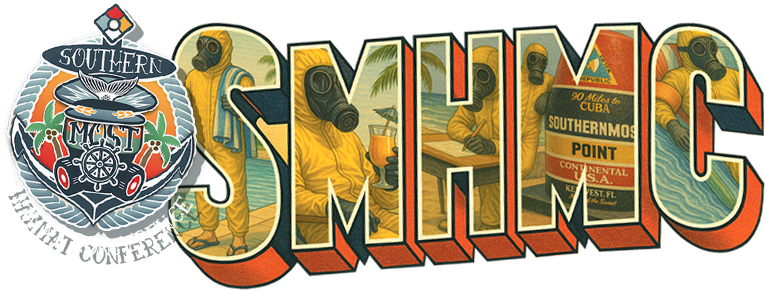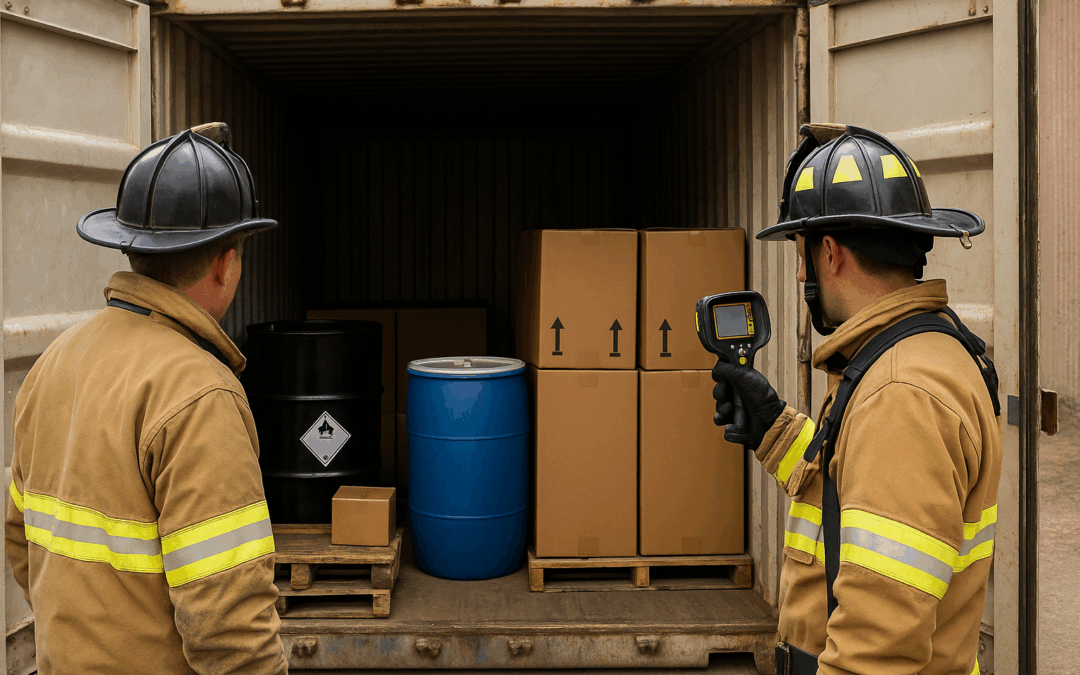What the Heck Is a Mixed Load? Tips From The Haz Mat Guys
The Hazmat Community’s Newest Tool: The NERD Book
Before we got into the meat of the conversation, Bobby and Mike shared exciting news: their long-anticipated book is finally out. It’s called National Emergency Response Hazmat Drills: 50 Drills to Improve Your Team – aka “NERD.” Written by hazmat professionals across the country, it’s designed to improve team training and keep departments sharp. It’s available in paperback and Kindle on Amazon, and they’re hoping to land it on the bestseller list. If you’re part of the hazmat community, check it out – and consider leaving a review.
What Is a Mixed Load?
We started by defining what a mixed load actually is. Contrary to popular belief, it’s not always a truck with placards. A mixed load can be any transport – vehicle, container, box truck, cargo unit – that contains more than one type of chemical. Sometimes the chemicals are hazardous only when combined, and the quantities are often small enough to avoid mandatory placarding under DOT rules. Think: a Home Depot run gone wrong or a FedEx truck filled with incompatible cleaning products.
As Bobby put it, “You have to approach these as mixed loads until you can prove they’re not.”
Why Mixed Loads Are Risky Business
With a single product load, you typically know what you’re dealing with. Even if it’s a large amount, you don’t have to worry about surprise reactions. But mixed loads? They’re like a science experiment waiting to go sideways.
Take a box truck carrying nitric acid and organics. The acid might off-gas when it touches wood pallets, or worse, produce flammable hydrogen gas when it reacts with metal flooring. You’re not just fighting one hazard – you’re playing chemical bingo.
Mike reminded me that it’s not always the big names like FedEx or UPS either. “You’d be shocked how many of these Mom-and-Pop trucks carry mixed loads with no shipping papers, no placards, no clue.”
Step One: Assume the Worst
Bobby and Mike were both adamant on this: always walk up assuming the worst-case scenario. Mixed loads are common, and the indicators – placards, driver statements, shipping papers – aren’t always reliable.
If the truck’s on fire and there’s no placard? Doesn’t matter. Treat it like it’s carrying the most reactive combo you can imagine. A Connex box at a Boy Scout camp might just have camping gear, or it could have leftover sulfuric acid from a prior use. Either way, you don’t know until you verify.
Tools of the Trade: What You Should Always Bring
Mike broke down what every responder should have:
- Thermal Imaging Camera (TIC): Your best friend when it comes to spotting chemical reactions, especially polymerizations that heat up before going off. It won’t give you numbers, but it’ll show you patterns.
- Temperature Gun: Pairs with your TIC to confirm increasing heat.
- Four- or Five-Gas Monitor: Wear it and watch it. If it’s silent, that’s a good sign. If it’s screaming, listen.
- pH Paper (Wet & Dry): A quick, underrated tool to pick up airborne acids or bases. Bobby likes taping it to his arm or meter – not the facepiece, which can block your view.
- Your Eyes: Seriously. Look for bulges, leaks, discolored patches, unusual smoke. Compare what you see with what you expect.
Opening the Beast
Here’s a scene that came up: you’re tasked with opening a tractor-trailer that’s been in an accident. Do you just swing the doors open? Absolutely not.
Mike and Bobby recommend using a long pike pole or setting a ladder a few inches from the doors. Assume something’s going to fall. Could be harmless boxes – or a 500-pound pallet of acid drums. Don’t be the one that turns a minor spill into a headline.
“Are you prepared for what you expect to happen?” Bobby asked. “If the answer is no, back off.”
Fire: To Fight or Not To Fight?
If the truck’s already on fire, one of the most important decisions is do you even try to put it out?
This was a big one. Mixed loads often contain chemicals that react poorly to water – creating runoff that spreads contamination. In some cases, trying to extinguish a fire does more harm than letting it burn.
Mike put it bluntly: “If it’s on fire, letting it burn is a viable option.”
That includes even explosives. Sometimes, burning is safer than risking a detonation. It all comes down to your assessment and the risks involved.
Real-World Scenarios: Batteries, Boxes, and Bad Surprises
Mixed loads aren’t always liquids in drums. They can be batteries, solids, powders, or pressurized cylinders like acetylene.
Thermal imaging is critical here. One overheating lithium battery in a truckload of them could trigger a runaway chain reaction. The key is to find that one battery before it lights up the rest.
“Look at the bank and see which one is not like the others,” Mike said. That advice goes for everything inside the container.
Key Tips from the Field
- Do a full 360° of the vehicle – look for smoke, leaks, heat, or signs of shifting.
- Assume a mixed load until confirmed otherwise.
- Don’t rely solely on the driver – they might not know what they’re hauling.
- Use tools that match your threat – thermal for reactions, pH for vapors, meters for flammability.
- Be cautious when ventilating – a poorly ventilated space can hide harmful vapors, even from a single leaking container.
- Watch the floor – metal + acid = hydrogen gas. Wood + oxidizers = combustion risk.
Final Thoughts: Hazmat Is About Thinking, Not Rushing
The biggest theme I took from this conversation? Hazmat isn’t about charging in – it’s about making decisions with the information you have, using your tools, and expecting the unexpected.
Mixed loads are like a roulette wheel. They might be nothing, or they might be a cocktail of chemicals one bump away from going boom.
Bobby wrapped it up best: “Don’t just get on the job – get into the job.”


